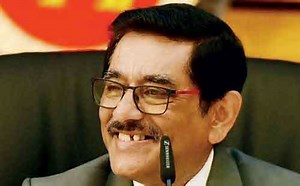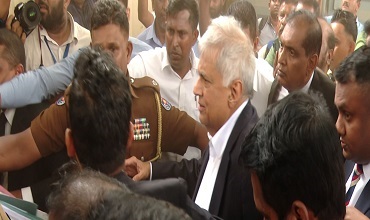
CB cuts rates to pre-empt any fallout from trade uncertainty
- CNL Reporter
- May 23, 2025
- Banking and Financial, News
- CB
- 0 Comments
Overnight policy rate trimmed 25bps to 7.75%, first time since November last year
Delivers surprise rate cut at the third monetary policy meeting for the year
Decision appears to be taken as a pre-emptive action against potential fallout from global uncertainties
The Central Bank delivered a surprise rate cut yesterday at its third monetary policy meeting for the year, reducing its key policy rate, the Overnight Policy Rate (OPR), by 25 basis points to 7.75 percent.
This was the first rate cut since last November, when the Central Bank introduced the single policy rate, the OPR, setting it at 8.00 percent, effectively reducing the policy rate by 50 basis points.
Leading up to yesterday’s decision, the consensus expectation was that the Central Bank would hold the key policy rate at its existing level, as inflation is moving in the desired direction, credit to the private sector is growing at a satisfactory pace amid declining interest rates, and the external sector remains robust, with tourism and remittances bringing in strong inflows.
“The Board is of the view that this measured easing of monetary policy stance will support steering inflation towards the target of 5 percent, amidst global uncertainties and current subdued inflationary pressures,” the Central Bank said in its policy announcement yesterday.
The deflation seen over the past eight months is fading fast and is expected to turn positive from the beginning of the third quarter, before converging at the Central Bank’s desired medium-term level of 5.0 percent. Meanwhile, inflation expectations are also aligning with the target.
The decision surprised many economists and analysts.
Consumer prices, measured by the National Consumer Price Index, fell by 0.8 percent in the 12 months through April 2025, narrowing from a 1.9 percent decline in March 2025.
However, it appears the rate cut was a pre-emptive move by the Central Bank in response to potential fallout from global uncertainties, possibly linked to tariffs imposed by the United States in early April.
“Recent leading economic indicators reflect sustained progress in domestic economic activity. However, global uncertainties, which could have implications on Sri Lanka, have escalated from the time of the previous monetary policy review,” the Central Bank added.
A 44 percent reciprocal tariff imposed on Sri Lanka, alongside nearly all major trading partners of the United States, was suspended a week later for 90 days to allow time for negotiations aimed at addressing the US trade deficit with those countries.
While a complete fallout was avoided, a 10 percent baseline tariff is currently in place.
Although negotiations are ongoing, with a Sri Lankan delegation visiting Washington a few weeks ago, the two parties have yet to reach an agreement.
Many countries, including those in Europe, as well as England, China, Australia and India, cut policy rates pre-emptively to mitigate potential economic pain from trade uncertainty.
However, some economists are concerned that Central Bank’s easing may be overdone, with the latest rate cut risking upward pressure on imports and the rupee. This, in turn, could challenge the Central Bank’s ability to build foreign reserves to US$ 9.3 billion by 2026, in line with the target set by the International Monetary Fund.




